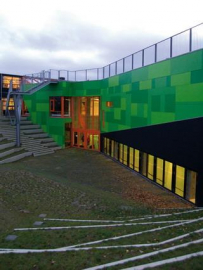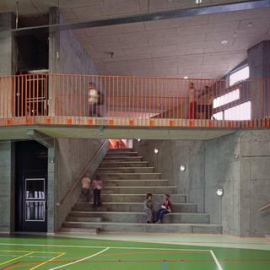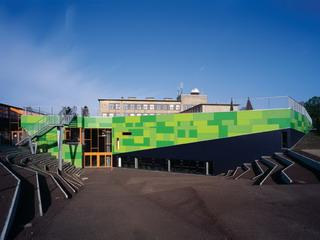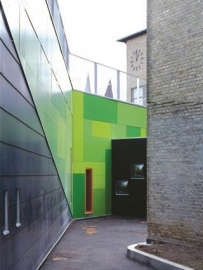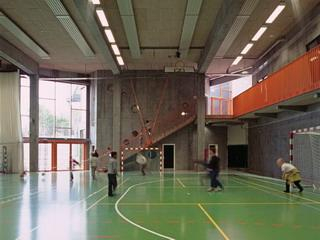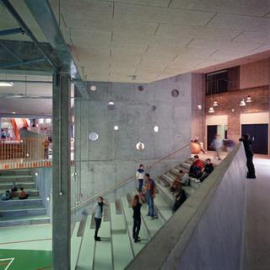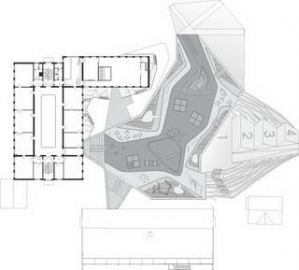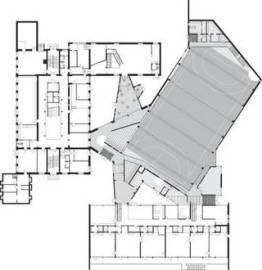Bakkegaard School
The Bakkegaard School is a state school constructed in 1935 which has not had large-scale refurbishment carried out since its construction. In 2002 it was therefore decided that the school should undergo renovation to meet present requirements based on a flexible physical framework for learning and education. The project includes refurbishment of the existing 7,000 m2 and a new structure of 3,500 m2. The project focuses on creating a new architectural experience for the pupils with varying spaces and a new flow of movement connecting all of the school s functions.
In order to strengthen this flow the individual functions are placed as centres of excellence where individual subjects such as music, nature, technology and IT are allocated special centres. The subject centres as well as the classrooms are situated around a common, so that the school becomes a flexible framework for developing its learning requirements over the coming years.
The main architectural feature for creating this new flow through the school is a new structure situated in the playground space. The new structure is angled in relation to the existing buildings to create a number of wedge-shaped spaces, but also lowered so that the stairs can be used as an amphitheatre and the whole roof of the new structure as a new part of the schools outdoor areas.
In order to create contrast between the existing and the new the facade has been chosen as an interplay between black and green nuances and the green motif is inspired by the pixels seen on computer screens using a digital zoom on the surrounding grass playing fields. The contrast of materials is brought into the building where the main construction itself is cast concrete and the other elements are light steel parts coloured orange to achieve additional distinction. The innovative structure is a catalyst for the new flow and as such does not manifest itself as a building in the conventional way, but more as a sculpture which in its design, roof playground and angles gives the Bakkegaard School a new identity.
The Bakkegaard School has been closely involved with the preparation of the design. The Municipality of Gentofte, the client, has established a project office (SKUB) handling user involvement in which management, employees, children and parents have participated in a process where design and interior decoration have been discussed from the overall layout down to 1:1 details. This process has created a different design universe where users even during construction have been able to qualify and discuss the solutions.
To create an equal discussion CEBRA and SRL found new forms of communication where games were developed to make employees participate in a kind of role play about the location of function and design. This input was then qualified through a number of draft proposals which were again put up for discussion. Hereby a design emerged as an interaction between input and design sketches which in the end have qualified the whole project.

